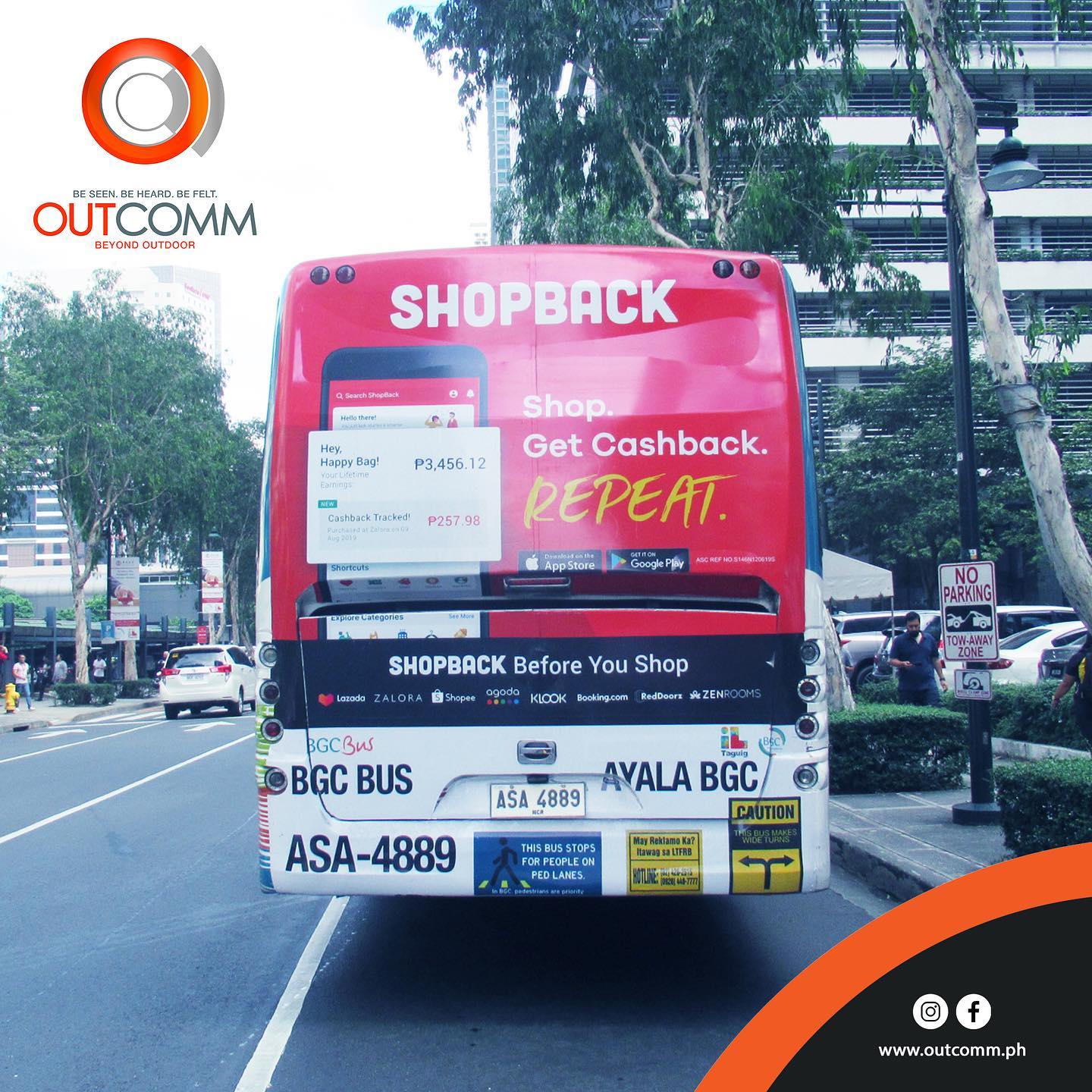Why Choose Transit Advertising Philippines for Your Brand
Why Choose Transit Advertising Philippines for Your Brand
Blog Article
Recognizing the Function of Transportation Marketing in Enhancing Brand Visibility and Consumer Involvement
Transit marketing has actually emerged as a crucial aspect in the advertising and marketing landscape, providing one-of-a-kind opportunities for brand names to boost their exposure and involve customers successfully. With the capacity to get to a restricted and varied audience during their daily commutes, these advertising and marketing strategies are not just about visibility; they have to do with producing significant links with prospective clients. As we explore the complex benefits and cutting-edge strategies within transportation advertising, it comes to be important to consider just how these elements jointly affect customer assumption and behavior, elevating inquiries concerning their long-term influence on brand loyalty.
Meaning of Transportation Advertising
Transit advertising and marketing refers to the method of advertising products, solutions, or brand names through promotions positioned around public transport systems. This type of marketing incorporates a range of positionings, consisting of posters on trains and buses, digital screens at transit terminals, and covers on the outside of automobiles. It intends to get to a varied target market, taking advantage of the high foot web traffic connected with public transit.
Transit advertising is strategically positioned to capture the focus of travelers, that often invest significant time waiting or traveling. By integrating advertisements right into the day-to-day routines of people, brands can develop an enduring impression and foster brand name acknowledgment. The tool is specifically efficient in urban environments, where mass transit is a key mode of traveling.
Additionally, transportation advertising can promote localized targeting, permitting companies to get to particular demographics based upon transit paths and station places. As urban populaces grow and using public transport boosts, this advertising and marketing method has actually gained prestige as a crucial component of incorporated advertising and marketing techniques. The vibrant nature of transportation advertising, integrated with its capacity to engage consumers in a restricted setting, underscores its value in modern advertising and marketing techniques.
Benefits of Transit Marketing
The performance of transit advertising and marketing hinges on its ability to provide a plethora of benefits to brands looking for to enhance visibility and interaction. Among the main benefits is the considerable reach it offers; transit ads can successfully target varied demographics throughout city locations, reaching both pedestrians and travelers alike. This wide direct exposure dramatically enhances brand recognition.
One more advantage is the high regularity of impacts. As transportation lorries follow well established paths and quit at several places, they produce repeated direct exposure that reinforces brand messages. This frequency fosters knowledge, which is important in consumer decision-making.
Transit advertising is also affordable compared to various other media systems. Provided its expansive reach and potential for high perceptions, brand names typically experience a lower cost per thousand impacts (CPM), optimizing their marketing budget.
In addition, transportation ads can create a feeling of neighborhood connection. By straightening with regional transit systems, brands can reverberate with local audiences and cultivate a sense of local satisfaction. This localized approach boosts brand commitment and involvement, making transit advertising and marketing a compelling selection for services aiming to strengthen their existence on the market.

Effective Approaches for Transit Projects
To maximize the effect of transportation campaigns, brand names ought to utilize tactical preparation and execution customized to their target audience. First, recognizing the market features of the audience making use of public transit is critical. This allows brands to develop personalized messaging that reverberates with potential clients.
Following, selecting the ideal transportation tools is vital. Whether using bus covers, metro posters, or digital displays, each medium has special benefits that can boost exposure. For circumstances, dynamic visuals on bus covers can bring in attention, while digital advertisements can be updated often to reflect prompt promos.
Additionally, integrating a cohesive branding approach across transit platforms guarantees uniformity and reinforces the brand name's identification. Utilizing eye-catching layouts and unforgettable check this site out taglines will strengthen brand name recall amongst commuters.
Last but not least, timing is a vital variable in performing successful transit campaigns. Releasing projects throughout peak travel hours or regional occasions can considerably raise visibility and engagement. By utilizing these approaches, brand names can properly harness the possibility of transportation advertising, fostering greater awareness and link with their target market. Ultimately, a well-executed transit campaign can drive substantial development in brand presence and customer involvement.

Determining Effect and Interaction
In evaluating the performance of transportation ad campaign, exact measurement of effect and involvement is necessary for brands looking for to enhance their marketing approaches. Metrics such as reach, frequency, and impressions give fundamental information to analyze exposure. Evaluating these factors aids figure out just how numerous possible customers are exposed to the ads during their everyday commutes.
Involvement can be more evaluated basics through customer communications, such as website web traffic, social networks states, and direct actions to calls-to-action featured in the advertisements. Utilizing devices like QR codes or unique URLs can promote tracking of customer actions directly connected to transportation campaigns. Studies and comments systems likewise function as important techniques to collect qualitative information on consumer understandings and recall of the promotion.
In addition, progressed analytics and attribution models can associate transportation direct exposure with subsequent investing in behavior, providing understandings right into the return on investment. By utilizing a thorough technique that incorporates qualitative and quantitative steps, brands can create a nuanced understanding of their transit marketing impact. Inevitably, this data-driven strategy makes it possible for brands to improve their campaigns, ensuring they resonate successfully with target market and boost total brand presence.
Instance Researches of Effective Projects
Effective transportation advertising campaigns act as compelling instances of just how effective techniques can elevate brand name presence and involvement. Transit Advertising Philippines. One notable case is the "I Love New york city" project, which changed the city's picture and drew in millions of travelers. By utilizing subway advertisements, signboards, and bus covers, the campaign created a strong, cohesive brand name identification, leading to a substantial uptick in tourist and regional company patronage
Another exemplary campaign is Coca-Cola's "Share a Coke" campaign, which leveraged transportation advertising to individualize the brand name experience. By featuring preferred names on advertising materials across numerous transportation platforms, Coca-Cola cultivated a much deeper emotional link with customers, encouraging them to share their experiences on social media.
Additionally, the "Got Milk?" project properly used public transport advertisements to get to a broad target market, strengthening the message of the importance of milk in a balanced diet. The project saw a measurable rise in milk usage in target content demographics.
These case studies highlight that when implemented thoughtfully, transportation advertising can considerably boost brand presence, foster consumer interaction, and drive measurable outcomes, demonstrating its crucial role in contemporary marketing methods. - Transit Advertising Philippines
Conclusion
In final thought, transportation marketing acts as a vital tool for enhancing brand exposure and fostering customer engagement. By utilizing purposefully put promotions within mass transit systems, brand names can efficiently get to diverse target markets and enhance acknowledgment through consistent exposure. The application of targeted messaging and cutting-edge techniques even more intensifies the influence of transit campaigns. Eventually, the capability to gauge interaction and assess successful instance researches underscores the efficiency of transit advertising and marketing in driving brand name commitment and consumer interactions.
Transportation marketing has emerged as a critical element in the marketing landscape, using special chances for brands to elevate their exposure and engage customers effectively.In addition, transportation marketing can assist in localized targeting, permitting organizations to get to certain demographics based on transit courses and terminal areas.In examining the effectiveness of transit marketing campaigns, exact measurement of impact and involvement is crucial for brand names seeking to maximize their advertising approaches.Successful transit marketing campaigns offer as compelling examples of exactly how effective methods can elevate brand presence and engagement.In final thought, transportation advertising serves as an essential device for boosting brand presence and cultivating consumer interaction.
Report this page